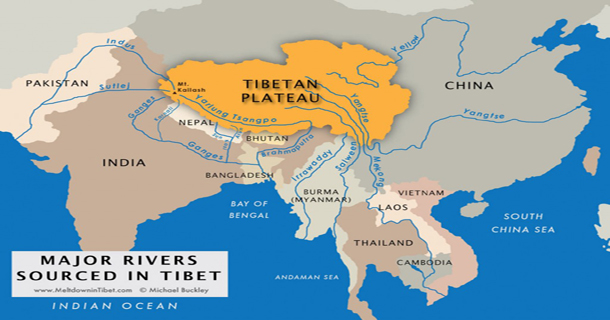 Authorities in the Tibet Autonomous Region have introduced ten new regulations to conserve local water resources and water ecosystems. According to the Chinese news website news.xinhuanet.com, these new regulations aim to strengthen control over pollutant discharge, manage water resources and develop new technologies to preserve water. They say that drinking water quality in major cities in the region is expected to meet national standards in 2020, and the ecosystems of local lakes, rivers and wetlands will be improved.
Authorities in the Tibet Autonomous Region have introduced ten new regulations to conserve local water resources and water ecosystems. According to the Chinese news website news.xinhuanet.com, these new regulations aim to strengthen control over pollutant discharge, manage water resources and develop new technologies to preserve water. They say that drinking water quality in major cities in the region is expected to meet national standards in 2020, and the ecosystems of local lakes, rivers and wetlands will be improved.
The Tibetan Plateau is often referred to as The Third Pole and The Water Tower of Asia:its mountains and glaciers are the sources of major rivers in ten downstream nations. Apart from the South pole and North pole, Tibet holds the largest ice mass on earth. According to studies by the United Nations and several prominent global environmental organisations, almost half of the world’s population depends on the watersheds of rivers originating in Tibet.
Recent studies – including several by the Chinese Academy of Sciences – have documented serious environmental challenges to the quantity and quality of Tibet’s freshwater reserves, most of them caused by climate change and human activities. The Tibetan Plateau is warming at about three times the global average, causing glaciers to recede at a rate faster than anywhere else in the world; this will impact on the provision of water to people living downstream.
In addition, an estimated 70 percent of China’s rivers are polluted, leaving an estimated 300 million people with limited access to clean water. The US$ 81 billion South-North Water Transfer Project is one effort to address the challenges ahead but there have been criticisms of this project.
Another approach is manufacturing of bottled water. China has become the world’s largest bottled water consumer and a major producer in the last two decades. Tibet is perceived as a clean and pure source of water, precipitating an influx of Chinese companies cashing in on the region’s water resources. The provincial government in Tibet had approved licenses for 28 companies to produce bottled water by the end of 2014.




 Print
Print Email
Email